Catholic Leaders Haven’t Answered for the Church’s Child Abuse
U.S. dioceses have begun releasing the names of the accused, but these lists are inconsistent, incomplete and often omit key details.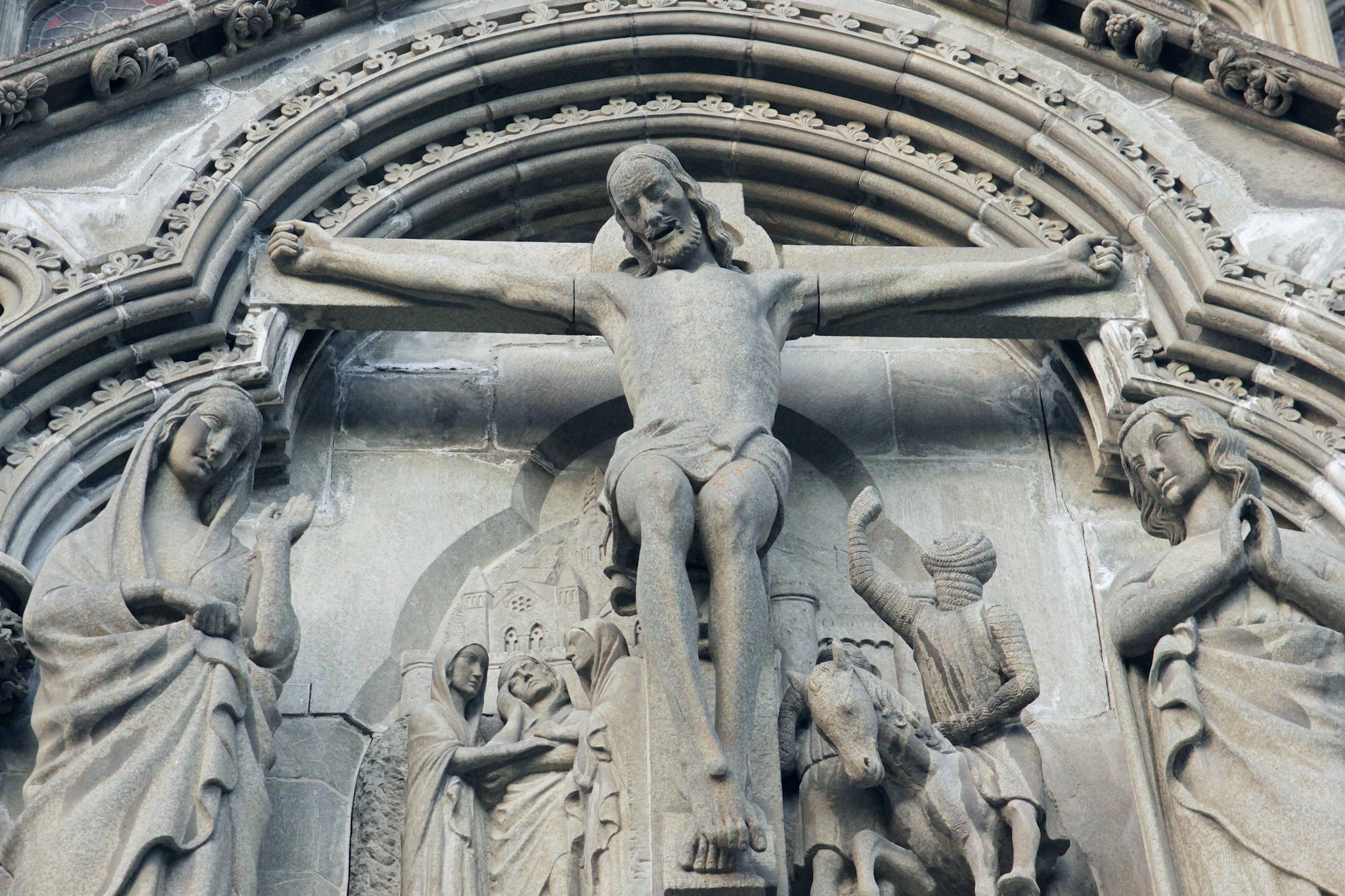 Jan Hammershaug / Flickr
Jan Hammershaug / Flickr
This story is co-published with the Houston Chronicle.
ProPublica is a nonprofit newsroom that investigates abuses of power. Sign up to receive our biggest stories as soon as they’re published.
It took 40 years and three bouts of cancer for Larry Giacalone to report his claim of childhood sexual abuse at the hands of a Boston priest named Richard Donahue.
Giacalone sued Donahue in 2017, alleging the priest molested him in 1976, when Giacalone was 12 and Donahue was serving at Sacred Heart Parish. The lawsuit never went to trial, but a compensation program set up by the archdiocese concluded that Giacalone “suffered physical injuries and emotional injuries as a result of physical abuse” and directed the archdiocese to pay him $73,000.
Even after the claim was settled and the compensation paid in February 2019, however, the archdiocese didn’t publish Donahue’s name on its list of accused priests. Nor did it three months later when Giacalone’s lawyer, Mitchell Garabedian, criticized the church publicly for not adding Donahue’s name to the list.
Church leaders finally added Donahue to the list last month after ProPublica asked why he hadn’t been included. But that, too, sowed confusion. Despite the determination that Giacalone was entitled to compensation, Donahue’s name was added to a portion of the list for priests accused in cases deemed “unsubstantiated” — where the archdiocese says it does not have sufficient evidence to determine whether the clergy member committed the alleged abuse.
“To award a victim a substantial amount of money, yet claim that the accused is not a pedophile, is an insult to one’s intelligence,” said Garabedian, who has handled hundreds of abuse cases over the last 25 years. “It’s a classic case of the archdiocese ducking, delaying and avoiding issues.”
Donahue, in an interview with ProPublica, denied the allegation by Giacalone.
Over the last year and a half, the majority of U.S. dioceses, as well as nearly two dozen religious orders, have released lists of abusers currently or formerly in their ranks. The revelations were no coincidence: They were spurred by a 2018 Pennsylvania grand jury report, which named hundreds of priests as part of a statewide clergy abuse investigation. Nationwide, the names of more than 5,800 clergy members have been released so far, representing the most comprehensive step toward transparency yet by a Catholic Church dogged by its long history of denying and burying abuse by priests.
But even as bishops have dedicated these lists to abuse victims and depicted the disclosures as a public acknowledgement of victims’ suffering, it has become clear that numerous alleged abusers have been omitted and that there is no standard for determining who each diocese considers credibly accused.
A spokesman for the Boston Archdiocese initially said Donahue wasn’t on its list of accused priests because he was still being investigated and subsequently called the delay an “oversight.”
Even when dioceses and religious orders identify credibly accused clergy members, the information they provide about those named varies widely. Some jurisdictions turn over far more specifics about problem priests — from where they worked to the number of their victims to the details of their wrongdoing — than others.
The U.S. Conference of Catholic Bishops, or USCCB, has issued no instructions on disclosures related to credibly accused priests, leaving individual dioceses and religious orders to decide for themselves how much or how little to publish. The USCCB says it does not have the authority to order dioceses to release names or to resolve disputes over who should be on the lists, though in 2002 after a scandal in Boston, the conference did put in place new protocols intended to ensure alleged abuse by clergy was reported and tracked.
“Recognizing the authority of the local bishop, and the fact that state and local laws vary, the decision of whether and how to best release lists and comply with varying civil reporting laws have been the responsibility of individual dioceses,” said Chieko Noguchi, a USCCB spokeswoman.
While the USCCB can propose policies for church leaders in the U.S., the bishops themselves are appointed by the pope and answer to him.
ProPublica has collected the 178 lists released by U.S. dioceses and religious orders as of Jan. 20 and created a searchable database that allows users to look up clergy members by name, diocese or parish. This represents the first comprehensive picture of the information released publicly by bishops around the country. Some names appear multiple times. In many cases, that accounts for priests who were accused in more than one location. In other instances, dioceses have acknowledged when priests who served in their jurisdiction have been reported for abuse elsewhere.
Kathleen McChesney, a former FBI official who helped establish a new set of child protection protocols within the USCCB in the early 2000s, has urged bishops and religious orders for nearly two decades to create a comprehensive list of accused clergy. She said our database will allow the public to better track dioceses’ disclosures, rather than seeing each list in isolation.
“People don’t know where to look,” McChesney said. “The contribution of the one list will help a lot of people to perhaps identify someone that they believe abused them.”
Still, much crucial information remains missing. Despite the recent surge of releases, 41 dioceses and dozens more religious orders have yet to publish lists, including five of seven dioceses in Florida, home to more than 2 million Catholics.
The database also doesn’t include many accused clergy members whom bishops have yet to acknowledge, even if they’ve issued lists. An organization called Bishop Accountability has long maintained its own database of publicly accused priests, drawn from court records, news articles and church documents. The organization’s list includes more than 450 names connected to dioceses that have not released disclosures.
The Survivors Network of those Abused by Priests, or SNAP, an advocacy organization for victims of clergy abuse, has pushed dioceses to identify known abusers and turn over records on them for decades. This process has finally begun, but the church’s obdurate culture of concealment remains, said David Clohessy, who led the group for nearly 30 years.
“They continue to be as secretive as possible, parceling out the least amount of information possible and only under great duress,” Clohessy said. “They are absolute masters at hairsplitting — always have been and still are.”
“Do we now know the names of more predator priests than before? Yes, of course. Are we anywhere near full transparency? Absolutely not.”
A Lack of Standards
Until recently, only a few dozen bishops had released lists of priests with credible allegations against them. Many did so only when compelled by courts, as a condition of bankruptcy proceedings.
That changed after August 2018, when the Pennsylvania attorney general, Josh Shapiro, published a 900-page grand jury report detailing not only abuse but a systematic cover-up by church leaders throughout the state. The report came just weeks after the resignation of then- Cardinal Theodore McCarrick, the former archbishop of Washington, D.C., and one of the highest ranking Catholic leaders ever felled by abuse allegations.
“The overall feel was like 2002 happening all over again,” Kevin Eckery, a Diocese of San Diego senior administrator, said, referring to the intense scrutiny that followed a Pulitzer Prize-winning Boston Globe investigation into sexual abuse by priests. “You could see that there was a need for a response that was about action and not a response that was about more words.”
Many of the 178 dioceses that have released new or updated lists of accused clergy since last year have cited the Pennsylvania grand jury report as a reason for doing so.
Still, without a consensus among church leaders on what constitutes a credible accusation, bishops have used vastly different standards to determine who should be named.
The Archdiocese of Seattle, which released its list prior to the grand jury report, began by dividing allegations into three categories: cases in which priests admitted the allegations or where allegations were “established” by reports from multiple victims; cases that clearly could not have happened; and cases that fell into a gray area, like those that were never fully investigated at the time they were reported. The archdiocese decided it would name priests whose cases fell into the first category and leave out the second group, but it sought additional guidance on the third set of cases.
“There’s the question of who determines it to be credible,” said Mary Santi, the chancellor and chief of staff for the Archdiocese of Seattle. “We decided that we couldn’t be the determiners of that.”
The Seattle Archdiocese brought in McChesney to help choose which names to disclose. Dozens of dioceses have turned to outside advisers, hiring former judges, former local law enforcement agents and law firms while others relied on internal review boards, composed of mostly non-clergy members.
Ultimately, dioceses have set different limits on what to publish. The Archdiocese of Kansas City in Kansas disclosed the names of priests even in cases in which officials could not substantiate the allegations themselves. In New Hampshire, the Diocese of Manchester’s bishop also opted for greater transparency than most, disclosing clergy members who were currently under investigation and who had died before an inquiry was complete.
SNAP leaders have pushed the diocese to publish those names, so far to no avail. “Their lack of transparency is devastating to those left in their wake,” Claudia Vercellotti, a SNAP leader in Toledo, said. “It defies logic that even when the church leader is dead, they are still protecting them over offering healing and transparency to the victims.”
Many dioceses have chosen not to include members of religious orders, such as the Jesuits, who have been accused of abuse. Religious order members, who make up 30% of U.S. priests, are taught and ordained within those orders, but they often spend much of their time working in the parishes and schools of local dioceses.
The Archdiocese of Milwaukee, at the direction of its court-appointed bankruptcy committee, discloses extensive information about each accused priest it names, including timelines of their careers and documentation of when and where they abused their victims.
But it leaves out religious order priests and priests who died before victims reported the abuse. Names of the deceased are only added if enough victims come forward to “show a trend,” though the archdiocese does not define how many allegations that would require.
Jerry Topczewski, chief of staff for Milwaukee Archbishop Jerome Listecki, said there’s room for debate over which accused clergy members should be named, but each diocese has to draw the line somewhere.
“At some point you have to make a decision,” Topczewski said. “Someone’s always going to say your list isn’t good enough, which we have people say, ‘Your list is incomplete.’ Well, I only control the list l can control and that’s diocesan priests.”
It’s impossible to know how many accused clergy members dioceses have opted not to put on their lists.
Bishop Accountability applies different standards for inclusion on its list than church leaders, tracking public accusations against nuns and other clergy members often left off the official rolls.
As a result, there are sometimes substantial gaps between the group’s tallies and those of dioceses.
The Archdiocese of Boston currently lists 171 names. Bishop Accountability lists 279, including dozens of religious order priests omitted from the official list as well as several priests who died before victims came forward.
“For every person who’s left off a list, bishops ought to be aware that they are retraumatizing survivors and doubling the insult and doubling the pain,” Terence McKiernan, the founder of Bishop Accountability, said.
Lost in the Archives
Over his 40-year career, Alfredo Prado was accused of abusing children repeatedly, in nearly every corner of Texas where he was assigned by his order, the Missionary Oblates of Mary Immaculate.
Today, he’s named on six separate diocesan lists of credibly accused priests. Yet each jurisdiction gives different information about him, making it difficult to piece together the arc of his career, the totality of his wrongdoing or what became of him.
The year Prado was ordained is shown on one list as 1958 and on two lists as 1957. The Diocese of San Angelo and the Diocese of Victoria refer to him as “Alfred” rather than “Alfredo.” San Antonio is the only diocese that discloses the total number of children he was accused of abusing within its jurisdiction, five.
His status is also characterized differently from one diocese to another. He’s described as suspended by the Diocese of Corpus Christi, dismissed from his religious order and the clerical state by the Archdiocese of San Antonio, and laicized (or returned to the lay state) by the Diocese of San Angelo. The Diocese of Amarillo adds that he fled to Costa Rica, but it doesn’t say when (according to news reports, it was in the early 2000s). The Diocese of San Angelo says Prado died, but doesn’t list the year. Only the Diocese of Victoria provides a complete bio for Prado, noting each time his status changed, though the list does not confirm he’s dead.
ProPublica contacted Prado’s order, which has not released its own list; an administrator said the order did not know if Prado was alive or dead.
Prado’s story is a striking example of inconsistencies in the information that bishops disclose about accused clergy members. Perhaps most remarkable is that it happened in Texas, where church leaders have made an effort to coordinate their releases. Nationally, the disparities in disclosures are even more pronounced.
At one end is the Diocese of Sacramento in California, which issues a release on each credibly accused clergy member, outlining identifying information that helps distinguish one priest from another such as their ordination dates, seminaries, birthdays and every place they served within the diocese. Leaders also disclose each accusation submitted against the clergy member, including the year it was reported, the nature of the abuse and the victim’s age and gender.
The Diocese of Ogdensburg in upstate New York is at the other end of the spectrum. Its list provides the first and last name of accused priests, with hardly any additional information.
Most disclosures fall somewhere in between. The Diocese of San Bernardino in California, for example, outlines each clergy members’ current status in the church, the assignments they held within the diocese, the dates of abuse and when the diocese reported the incident to law enforcement.
Dioceses consistently label clergy who have died as “deceased,” which accounts for about half of the priests in ProPublica’s database. Jurisdictions are far less uniform in giving information about living members’ current locations or standing in the church. Over 700 clergy members’ status isn’t given or is marked as “unknown.”
Details about credibly accused priests’ abuse are scarce. Church leaders have disclosed the number of allegations made against roughly 10% of the clergy members they’ve named, according to a ProPublica data analysis.
In the early 2000s, dioceses across the country filled out detailed surveys compiled by researchers at the John Jay College of Criminal Justice for the first-ever nationwide study of sexual abuse by clergy. The USCCB mandated the study as one of the new safety initiatives outlined in the 2002 Charter for the Protection of Children and Young People. Dioceses have continued reporting new allegations annually to the Center for Applied Research in the Apostolate at Georgetown University.
Two John Jay researchers who helped diocesan employees fill out the initial surveys say that sometimes the lack of details about abuse by priests stems from sparse recordkeeping or different ways of defining abuse, especially when it comes to older allegations.
“It was thought about differently, so it was recorded differently than it would be today,” one of the researchers, Karen Terry, said.
Still, dioceses have other information that they often do not disclose, including schools or parishes clergy members were assigned to while serving in a diocese.
McChesney, whose firm, Kinsale Management Consulting, has worked with a few dozen dioceses and religious orders on their disclosures over more than a decade, says dioceses typically keep thorough records of who is serving and when.
“If you want to find out if somebody was baptized in 1889 in La Crosse, Wisconsin, you can find that,” she said.
Disclosing those details can help survivors, especially those who were young at the time of their abuse, to distinguish between clergy with common or similar names, McChesney said.
Only about 58% of the clergy members listed have information about what parishes or schools they served in. Often, the assignment histories provided by dioceses list only a priest’s appointments within that diocese, not where they worked or what positions they held over the rest of their careers.
“It’s so simple,” McChesney said. “All it takes is a good research look and frankly, if you look sometimes at websites of dioceses and universities in the area, you can put that together.”
Mary Gautier, a senior research associate at the Georgetown center, said smaller dioceses with limited budgets don’t always have the money or staff to dig through their archives.
“One thing that the church is very good at is recordkeeping … but it’s very, very time consuming and labor intensive to really go through years and years and years of personnel records and track all this out,” Gautier said. “And I mean doing hand searches. There’s none of this computerized, of course.”
Decades of Rage
After his years in Boston, Donahue spent much of the last 20 years of his career serving in Honduras, where he established and ran schools funded by his organization, the Olancho Aid Foundation. He was back in the United States for medical care in 2015 when he was informed of the first of two abuse allegations made against him. The second accusation, by Giacalone, came in 2017.
In the interview with ProPublica, Donahue denied both men’s allegations and said he assumed his accusers had confused him with someone else or were looking for a payoff from the church. One accuser says he was abused for several years, up until 1981, but Donahue noted that in 1980, he moved to another assignment, elsewhere in Massachusetts.
“I never met either one of them,” Donahue said in the interview at his house in Cape Cod. “From a faith perspective, I’m trying to think there’s a reason I’ve gone through this cross, for the last three years, with these false allegations. Why me? I don’t know.”
After the first abuse allegation, in 2015, Donahue was prohibited by the archdiocese from participating in public ministry or entering parish or school property and was barred from returning to his work in Honduras.
The accuser who came forward in 2015, also represented by Garabedian, has submitted a claim through the archdiocese’s compensation program and is waiting for the church to decide if the claim is credible, Garabedian said.
Giacalone, now 55, says Donahue’s abuse led to decades of rage, alcoholism and drug use. He said he started drinking the day Donahue touched him. “What was I going to turn to?” he told ProPublica. “I thought I’d get relief. The first couple times, yeah, it helped me forget. But getting stinking drunk doesn’t really do anything for you.”
Giacalone said that he was held back in school and dropped out at one point, and that he had trouble holding down work and had run-ins with the police from an early age. In December 2010, he faced assault charges after his wife told police he had threatened and pushed her; the charges were dropped after she refused to go forward with a case.
He doesn’t blame the dispute with his wife or other low points in his life directly on his sexual abuse, but says it colored everything that followed. “It all stems, mostly, from that incident,” he said.
When a reporter told Giacalone that the Boston Archdiocese had found his accusation against Donahue to be “unsubstantiated,” even after the decision that Giacalone had to be compensated, he shook his head.
“I feel bad for their parishioners,” he said. “They are living a lie too.”
Katie Zavadski of ProPublica and Nicole Hensley of The Houston Chronicle contributed reporting.
Logos for the Dioceses of San Angelo, Victoria and Amarillo by Roberto221. Logos for the Archdiocese of San Antonio and the Diocese of Corpus Christi by Alekjds. Logo for the Diocese of Lubbock by Jayarathina.
As we navigate an uncertain 2025, with a new administration questioning press freedoms, the risks are clear: our ability to report freely is under threat.
Your tax-deductible donation enables us to dig deeper, delivering fearless investigative reporting and analysis that exposes the reality beneath the headlines — without compromise.
Now is the time to take action. Stand with our courageous journalists. Donate today to protect a free press, uphold democracy and uncover the stories that need to be told.
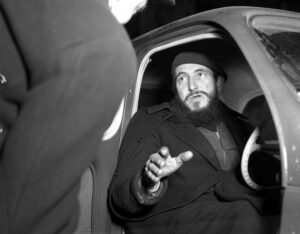 TD Original
Christopher Lord / Truthdig
A sex scandal involving its most admired celebrity is shaking France to its core.
TD Original
Christopher Lord / Truthdig
A sex scandal involving its most admired celebrity is shaking France to its core.
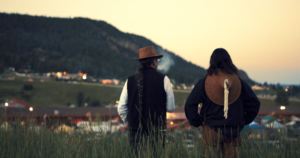 Film
Ed Rampell / Truthdig
“Sugarcane” tells the story of what kept a people together, despite a systematic effort to alienate them.
Film
Ed Rampell / Truthdig
“Sugarcane” tells the story of what kept a people together, despite a systematic effort to alienate them.
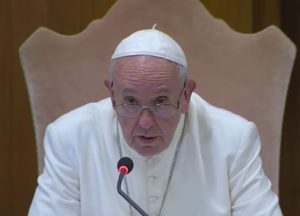 NICOLE WINFIELD . The Associated Press
The papal dodge disappoints progressives and liberal Catholic women's groups while reassuring conservatives.
NICOLE WINFIELD . The Associated Press
The papal dodge disappoints progressives and liberal Catholic women's groups while reassuring conservatives.
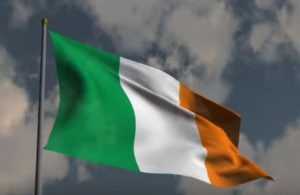 JILL LAWLESS and NICOLAE DUMITRACHE / The Associated Press
As voters prepare to choose a new parliament on Saturday, polls show surprising support for the party historically linked to the IRA.
JILL LAWLESS and NICOLAE DUMITRACHE / The Associated Press
As voters prepare to choose a new parliament on Saturday, polls show surprising support for the party historically linked to the IRA.
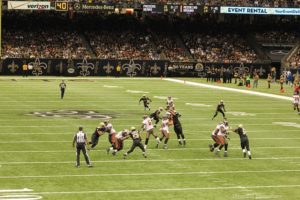 JIM MUSTIAN / The Associated Press
Attorneys for about a dozen claimants allege hundreds of confidential emails show the New Orleans team was involved far more than it admits.
JIM MUSTIAN / The Associated Press
Attorneys for about a dozen claimants allege hundreds of confidential emails show the New Orleans team was involved far more than it admits.
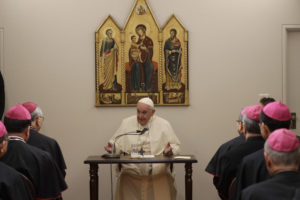 NICOLE WINFIELD / The Associated Press
The church must now cope with the globalization of the scandal that once seemed largely confined to the English-speaking world.
NICOLE WINFIELD / The Associated Press
The church must now cope with the globalization of the scandal that once seemed largely confined to the English-speaking world.
You need to be a supporter to comment.
There are currently no responses to this article.
Be the first to respond.